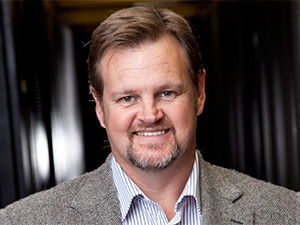
Regardless of whether a company operates its own data centre or is using a co-location model, three things should top the modern data centre professional's priority list to ensure operational efficiency, says Lex van Wyk, CEO of Teraco Data Environments.
The first is the availability of power. The primary objective of a data centre is to provide reliable, uninterrupted data access, and the importance of power backup in a data centre cannot be underestimated in ensuring fail-safe and continuous availability of data and resources.
The forecasting of requirements is the second priority. "As a business, you need to determine how fast your organisation will grow; how much power you will need; how much space you will require; and whether you have enough to sustain your growing business."
The third priority for IT professionals is connectivity: "It's not just about the data centre anymore; it's about the connectivity."
In an increasingly virtual world where exchange of critical information is a click away, data centres form the backbone of all network operations, and connectivity can be a real game-changer if an organisation is to remain competitive, says Van Wyk.
The importance of connectivity is underlined by cloud deployment, particularly the hybrid infrastructure set-up that is rapidly becoming the norm, he adds.
Van Wyk believes the future of data centres lies with infrastructure-sharing and, ultimately, an outsource model. "The types of companies that will get ahead are those that have a CIO with a vision of moving into a hybrid infrastructure, with the next step being an outsourced model."
Telco providers and carriers have been quick to realise this and take advantage of vendor-neutral data centre arrangements early on, says Van Wyk.
Some of the benefits of using vendor-neutral data centres include creating efficiencies through using green IT solutions, as well as efficient power management, which are critical components in building a competitive data centre environment, he adds.
Commenting on the current load-shedding crisis in the country and its impact on data centres, Van Wyk says: "Power is a scarce resource, and by forecasting usage properly as well as managing it carefully in a larger environment, one can get the benefits derived from economies of scale."
With the rate of cloud take-up, big data and the Internet of things, though, no business can forecast exactly what the future will hold, so companies must be agile. "Outsourcing your data centre provides a substantial amount of flexibility and responsiveness that businesses will need for the next frontier of data centre management," he says.
Van Wyk will participate in an interactive head-to-head panel discussion focused on the 'build or buy' debate, at the ITWeb Data Centres: The Next Frontier 2015 conference, taking place at The Forum, in Bryanston, on 21 and 22 July.
Joining him is Brendan Dysel, head of data centre systems at Teraco Data Environments. He will deliver a practical workshop on how to effectively operate data centre facilities in Africa's challenging environment, and overcome impact events that include routine switching and reconfiguration of critical systems, maintenance tasks, human error, and the load-shedding crisis.
Learn more info about the event here.